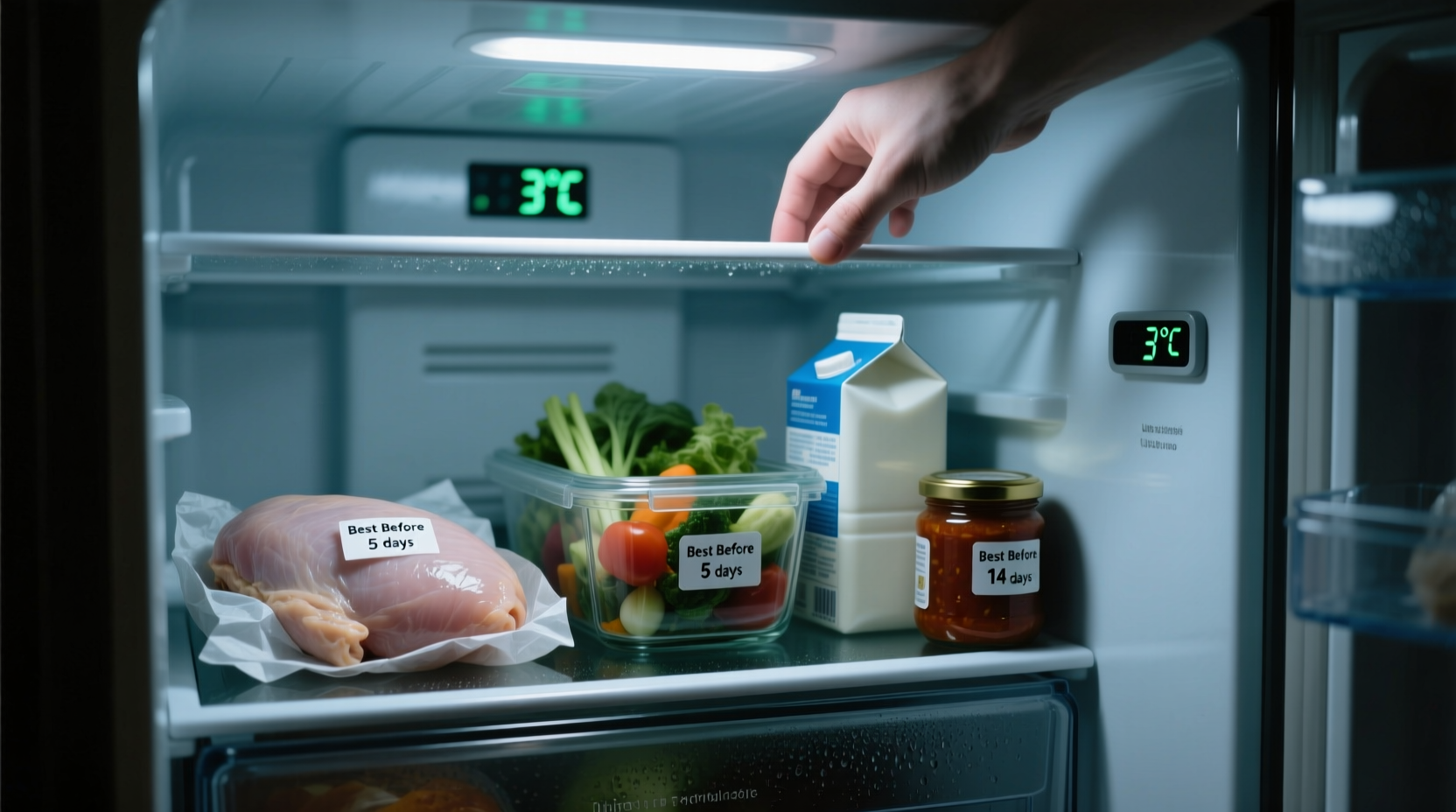Understanding exactly how long can food stay in the fridge is essential for preventing foodborne illness while minimizing waste. Food safety experts agree that proper refrigeration dramatically extends food freshness, but each category has specific limitations based on composition, preparation method, and storage conditions.
Why Refrigeration Timelines Matter for Food Safety
Refrigeration slows but doesn't stop bacterial growth. The FDA Food Code establishes that potentially hazardous foods must be kept out of the temperature danger zone (40°F-140°F) to prevent pathogen multiplication. According to the USDA Food Safety and Inspection Service, certain bacteria can double in number every 20 minutes within this range.
Modern refrigeration standards have evolved significantly since the 1940s when the first home electric refrigerators became common. Today's precise temperature control allows for more reliable food storage timelines than ever before, but consumer knowledge hasn't always kept pace with these advancements.

Complete Food Storage Timeline Reference
Use this comprehensive guide to determine exactly how long can food stay in the fridge before becoming unsafe. These recommendations follow current USDA FoodKeeper guidelines and FDA food code standards.
| Food Category | Unopened | After Opening/Preparation | Critical Notes |
|---|---|---|---|
| Raw poultry | 1-2 days | Immediately cook or freeze | Never rinse raw poultry - spreads bacteria |
| Raw beef/pork | 3-5 days | Immediately cook or freeze | Ground meats spoil faster than whole cuts |
| Cooked meats | N/A | 3-4 days | Store in shallow containers for rapid cooling |
| Milk | 5-7 days past sell-by | 5-7 days after opening | UHT milk lasts longer but still 7-10 days after opening |
| Eggs in shell | 3-5 weeks | N/A | Never store eggs in fridge door (temperature fluctuations) |
| Cut fruits/vegetables | N/A | 3-4 days | Store in crisper drawer with proper humidity settings |
| Leftovers | N/A | 3-4 days | Cool within 2 hours; divide large portions for faster cooling |
| Opened condiments | N/A | 1-6 months | Mayo, tartar sauce: 2 months; ketchup: 6 months |
Maximizing Refrigerator Food Safety
Temperature Control Essentials
Many households make the critical mistake of assuming their refrigerator maintains proper temperatures. The FDA recommends using an appliance thermometer to verify your refrigerator stays at or below 40°F (4°C). Temperature fluctuations occur most frequently in the door compartments, making them unsuitable for highly perishable items like dairy and meats.
Strategic Food Placement
Understanding your refrigerator's temperature zones prevents premature spoilage. The coldest areas (typically the back and bottom shelves) work best for raw meats, while the door's warmer environment suits condiments and shelf-stable items. Proper air circulation around food containers ensures consistent cooling - don't overcrowd your refrigerator.
Advanced Storage Techniques
Extend freshness with these professional methods:
- Moisture management: Store leafy greens with paper towels to absorb excess moisture
- Air-tight containers: Use glass containers with tight seals for maximum freshness retention
- Labeling system: Mark containers with contents and date using freezer-safe tape
- Strategic stacking: Place older items in front of newer purchases (first in, first out)
Recognizing When Food Has Spoiled
Expiration dates provide general guidance but don't tell the complete story about how long can food stay in the fridge safely. Trust your senses over printed dates:
- Visual inspection: Mold growth, discoloration, or slimy textures indicate spoilage
- Smell test: Sour, rancid, or "off" odors signal bacterial growth
- Texture changes: Sliminess on meats or excessive softness in produce
When in doubt, throw it out. The USDA Food Safety and Inspection Service emphasizes that no amount of cooking can eliminate all toxins produced by certain bacteria once they've reached dangerous levels.
Special Circumstances and Exceptions
Power Outages and Temperature Fluctuations
During power outages, a full refrigerator maintains safe temperatures for approximately 4 hours if unopened. The FDA recommends keeping appliance thermometers in both refrigerator and freezer to monitor temperatures during outages. Discard perishable foods if the refrigerator temperature remains above 40°F for more than 2 hours.
Meal Prepping Considerations
When planning weekly meals, understand that how long can food stay in the fridge after cooking differs from raw ingredients. Cooked grains and proteins maintain safety for 3-4 days, while roasted vegetables typically last 4-5 days. Acidic components like vinaigrettes can extend freshness of certain prepared dishes.
Vacation and Extended Absences
Before leaving home for extended periods, clean your refrigerator and remove perishable items. The USDA recommends consuming or freezing all highly perishable items (dairy, meats, leftovers) before departure. For moderate absences (3-5 days), consolidate items to maintain cold air circulation.
Common Misconceptions About Refrigerator Storage
Several persistent myths affect how people determine how long can food stay in the fridge:
- "If it smells okay, it's safe" - Many dangerous bacteria don't produce noticeable odors
- "Freezing kills bacteria" - Freezing only suspends bacterial growth; pathogens reactivate when thawed
- "The fridge door is fine for milk" - Temperature fluctuations in the door compromise dairy safety
- "Expiration dates are absolute" - "Best by" dates indicate quality, not safety
Food safety researcher Dr. Jane Collins from Cornell University's Food Safety Lab notes: "Consumers often overestimate both the protective power of refrigeration and their ability to detect spoilage through sensory evaluation. Following established timeframes provides the most reliable protection against foodborne illness."
When to Consult Additional Resources
For specialized food storage questions beyond standard how long can food stay in the fridge guidelines, consult these authoritative resources:
- USDA FoodKeeper app for personalized storage recommendations
- FDA's "When and How to Throw It Out" guide for specific food items
- Local university extension services for region-specific advice











 浙公网安备
33010002000092号
浙公网安备
33010002000092号 浙B2-20120091-4
浙B2-20120091-4